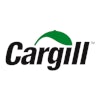Traditional animal feed formulation is premised on finding the lowest-cost ration that obtains the desired level of performance. Increasingly, computer software programs that formulate animal feed employ what is often referred to as a “least cost” formulation system. This has been the case for quite some time. To the average person engaged in the animal feed industry, least cost formulation is not controversial. But to those unfamiliar with production agriculture, least cost formulation may require some explanation.
Before delving too deeply into this subject, let’s first get our terminology defined. By “least cost,” we mean computer formulation software that will choose the lowest cost solution to satisfy a particular nutrient profile needed by the animals in question to support commercially viable weight gain or milk production. Least cost does not mean buying the least expensive ingredient available. In fact, good least-cost formulation systems will often choose a more expensive ingredient that more than makes up for its higher price by having greater nutritional value than a less expensive ingredient. Thus, this technology may be better expressed as a “best value” system.
In this era of high and volatile feed prices and thin margins, it is more important than ever for producers and their suppliers and vendors to employ efficient strategies. Least-cost formulation programs have helped producers improve efficiency and profitability by not overpaying for feed, or feeding a more expensive ration than necessary to achieve the desired level of production. In today’s marketplace, a producer not using least-cost formulation is putting itself at a significant competitive disadvantage.
Despite this commercial reality, the potential negative connotation some people associate with the least-cost concept contributes to the risk of disputes and lawsuits by farmers claiming product liability and allegedly negligent nutrition services. As is often the case, what is straightforward in the office and laboratory may not be as clear-cut in a courtroom, where a handful of jurors decide disputes that may have significant impacts on the parties’ bottom lines. To at least some of those potential jurors, feed ingredients pulled through a least-cost system may sound like “cheap” or “inferior” ingredients, and your company and its counsel could face an uphill battle convincing them otherwise. Fortunately, there are steps companies can take to reduce such risk.
Require reliable inputs and document them
A vigorous defense of a least-cost formulation system will rely on the science behind the assumptions and algorithms being used in the program. To use a crude example, if your company’s dairy formulation tool assumes a higher amount of methionine in soybean meal than do competitors’ systems, that distinction must be based on sound science. Otherwise, the system will tend to underfeed methionine and the nutrition the animals receive will be less than optimal.
Almost as important as sound science for product liability purposes is the need to document that sound science. You should be able to provide your counsel the documentation that will permit counsel to explain how the best available research supports the assumptions made in the program. While this science may not be enough by itself to win your case, without it your company is likely to lose.
Study and track performance
If your company’s formulation system works to provide good feed to your customers at a good price, jurors might expect your company to have evidence supporting that assertion. Such evidence might include, for example, a study comparing performance and price of a least cost system with a system in which decisions are made without regard to price. Such evidence might also include “testimonials” from satisfied customers who are willing to praise your company’s system and credit it for positive results achieved on their farms. Happy customers can create powerful evidence that your system works and may lead an objective observer to conclude that a customer allegedly experiencing poor results may be merely making excuses.
Because agricultural producers are typically reluctant to get involved in litigation to which they are not a party, particularly when to do so they will have to take sides against another producer, the task of identifying satisfied customers should take place before a claim is brought against your company. Having already made a public commitment to support your company’s system, such customers are more likely to follow through with a willingness to repeat that opinion in the context of litigation.
Stay flexible
Your company’s formulation system should allow your formulation employees to override the system’s recommendations, whether for reasons of customer preference, palatability or pelletability (where applicable). This is not only a good business approach but also a good legal approach. Such flexibility will help demonstrate that your company was looking out for its customers and empowering its employees to make individual decisions instead of relying purely on a computer.
Communicate with customers
If your company’s customers understand, even in very general terms, the formulation system your company is employing, they will be less likely to sue and claim surprise that least-cost formulation was being used. Open communication tends to make customers feel like trusted partners. While not removing the economic pressures today’s livestock producers are under, customers who feel a sense of partnership with your company and believe it has been open and forthcoming with them are less likely to sue than those who do not feel this way.
Similar to the point above about sound science, here too, documentation is important. Of course, the “gold standard” would be a written acknowledgement of least-cost formulation signed by the producer. For many reasons, a signed acknowledgement may not be realistic, but short of that there are still steps your company can take to improve its position in any subsequent litigation. Such steps can include promotional materials in writing and/or on the company website, and training manuals to help your company’s employees communicate with customers. If these materials suggest a dialogue with customers about ingredient choices being made for economic reasons, your company will appear more credible when asking a jury to conclude that the producer already knew about the system and is now just pointing fingers and seeking a windfall.


















